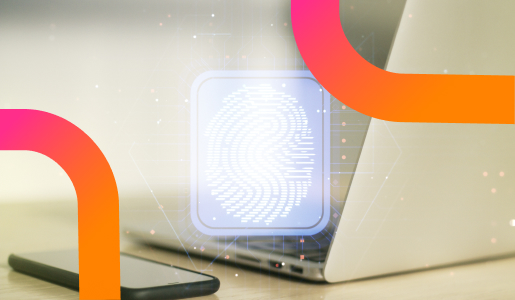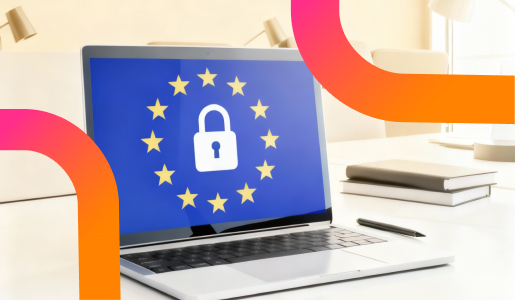As digital becomes the norm, the collection of consent has become a critical issue for businesses and organisations both legally and ethically. Whether it involves complying with GDPR requirements, regulating healthcare practices, or securing contract signatures, it is essential to be able to reliably demonstrate that consent was validly given, under clearly defined conditions.
Traditional tracking methods, however, quickly reveal their limitations under the weight of rising compliance and evidentiary standards. In this context, qualified timestamping and electronic sealing have emerged as trusted solutions to ensure the integrity, authenticity, and legal enforceability of collected consent.
In the first section, we will explore why these technologies should be prioritised to strengthen the legal security of consent. We will then illustrate their practical application through several real-world use cases.

Sommaire
- Why Qualified Timestamping and Electronic Seal should be prioritised for consent management
- Use cases highlighting the importance of consent evidence .
Why Qualified Timestamping and Electronic Seal should be prioritised for consent management
Consent is not always a signature
In many situations, consent isn’t given through a formal electronic signature, but rather through everyday digital interactions such as:
- Ticking a box
- Clicking an “I accept” button
- Submitting an online form
- Creating an account
- Scrolling through a web page
Even without a signature, they can indicate valid consent as long as they’re backed by reliable, verifiable evidence. This is precisely where Qualified Timestamping and Electronic Seals come into play. These tools are key to establishing solid proof that consent was given, and to reversing the burden of proof in the event of a dispute, thanks to the presumption of reliability provided by the eIDAS Regulation.
In practical terms, they help ensure that:
- Consent was given at a specific moment in time (timestamp as proof of date)
- The organisation collecting consent is clearly identified (proof of authenticity)
- The content accepted by the user hasn’t been altered afterwards (proof of integrity)
- A secure, long-term record is retained for future reference
The seal commits the issuing organisation not the user
TheEelectronic Seal plays a key role in securing digital documents. It acts much like a digital equivalent of an official stamp applied by a company, public authority, or service platform.
It serves to:
- Guarantee that the document or form genuinely originates from an identified entity (such as a publisher, organisation, or service provider)
- Lock in the content at a specific point in time, preventing any alterations after issuance, thanks to qualified timestamping
- Provide legally admissible proof without requiring the user to sign anything
This approach significantly simplifies the user experience, while still ensuring a high level of legal certainty strong enough to shift the burden of proof if the consent is ever challenged.
When combined with Qualified Timestamping, it becomes irrefutable evidence
When a qualified Electronic Seal is applied at the moment consent is collected together with a qualified electronic timestamp it creates a highly reliable digital proof with full legal standing:
- The form or user action is sealed (proof of authenticity)
- The exact date and time of consent are recorded (timestamp evidence)
- The content is guaranteed to remain unchanged thereafter (proof of integrity)
This level of proof is fully admissible in court, including before highly demanding jurisdictions such as French courts of appeal, which often require robust, traceable evidence that complies with the eIDAS Regulation.
Use cases highlighting the importance of consent evidence
GDPR consent for the collection of personal data
The GDPR requires companies and organisations to demonstrate that each user has freely, knowingly, and explicitly consented to the processing of their personal data. This applies to scenarios such as signing up for a newsletter, accepting cookies, or submitting a contact form.
In the event of an audit or complaint, the absence of clear, time-stamped proof can prove costly. To date, more than €4.5 billion in fines have been issued across Europe for GDPR breaches many of them linked to improperly documented or unverifiable consent [1].
In this context, Qualified Timestamping has become a strategic tool for organisations. It enables them to:
- Certify the exact date and time the user gave consent with recognised legal value
- Prove that consent was granted before any data processing began, based on the terms presented at the time
- Protect themselves legally against disputes such as “I never gave my consent”
When combined with an electronic seal applied by the issuing entity (e.g. website, platform, or publisher), qualified timestamping allows companies to build strong, GDPR- and eIDAS-compliant evidence while keeping the user experience seamless and unobtrusive.
Consent in a medical or paramedical context (teleconsultations, clinical trials)
In the medical and paramedical fields, obtaining a patient’s informed consent is both an ethical obligation and a legal requirement. It applies to any form of intervention, teleconsultation, or participation in a clinical study. This consent must be given freely and with full understanding, and crucially must be rigorously documented.
In practice, however, particularly with the rapid digitalisation of healthcare pathways providing this proof can be challenging. According to the French data protection authority (CNIL), 70% of disputes concerning personal data in the healthcare sector involve a lack of evidence of patient consent [2].
The combined use of Qualified Timestamping and an Electronic Seal offers a robust and compliant solution:
- It proves that the patient gave informed consent at a specific moment, having first reviewed all required medical or legal information
- It guarantees the integrity of the consent document or form, preventing any modification after it was validated
- It ensures full traceability, essential in the event of an audit, compliance check, or legal dispute
This approach provides strong legal protection for healthcare professionals, while upholding patients’ rights in an increasingly digital care environment.
Signing a digital contract
Across a wide range of sectors banking, insurance, human resources, real estate, B2B services electronic signatures have become the standard for formalising contractual commitments: employment contracts, mandates, leases, service agreements, and more. They are used to express each party’s consent to the contract terms, streamlining the signing process while maintaining legal validity for agreements concluded remotely.
However, the evidential value of electronic signatures, even qualified ones, can be weakened if the supporting technical audit trail is incomplete or difficult to verify, as highlighted in recent rulings by appellate courts [3]. For this reason, it is strongly recommended to reinforce electronic signatures with qualified timestamping, which certifies the date, integrity, and traceability of the signed document.
Qualified timestamping enables the organisation to:
- Certify the exact date and time the contract was signed, precisely when consent was expressed
- Ensure the integrity of the signed document, preventing any subsequent alterations
- Build a strong evidentiary record legally robust even in the event of a dispute or challenge to the presumption of reliability
When combined with an electronic seal issued by the contracting organisation, qualified timestamping helps establish a complete, high-assurance evidence file, fully compliant with European law and reassuring to all parties involved.
Agreement to Terms and Conditions (T&Cs)
When signing up online or making a purchase on a platform, users are required to agree to the Terms of Use or Terms of Sale. Although this consent is often expressed by simply ticking a box, it still constitutes a legally binding agreement.
The challenge is that these terms may change over time. In the event of a dispute such as one involving billing, cancellation, or the conditions of use it becomes essential to prove exactly when the user agreed to a specific version of the Terms of Use or Terms of Sale. Without this traceability, the platform or publisher may face legal challenges to the very basis of the contractual relationship.
Qualified timestamping, combined with content verification, offers a secure and compliant solution:
- It provides legally recognised proof of the exact date and time the user agreed to the terms.
- It confirms that the user accepted a specific version of the Terms of Use or Terms of Sale, on a clearly recorded date.
- It is especially useful in environments where terms are updated frequently, such as SaaS, fintech, e-commerce, or collaborative platforms.
- When combined with an electronic seal and a sealed copy of the terms, it ensures full traceability in case of litigation.
In this way, qualified timestamping becomes a key tool for contractual security, helping digital businesses protect themselves against disputes related to the evolution or acceptance of their terms of service.
Delivery notification or proof of document transmission
In many professional situations, simply sending a document is not enough, it must be possible to prove that it was delivered, on a specific date, in an unaltered form. This applies in numerous contexts, including:
- Sending a contract or amendment to a client or employee for signature
- Notifying a change to the Terms of Sale or privacy policy
- Providing access to regulatory documents such as audit reports, board meeting minutes, or payslips
- Issuing a formal notice or termination letter
- Communicating exam results or administrative decisions
However, sending an email or uploading a file to a client portal is not always sufficient as legal proof in the event of a dispute. It may not reliably establish the exact date of transmission, guarantee the integrity of the document, or make the delivery legally enforceable against the recipient.
This is where qualified Electronic Timestamping, in compliance with the EU eIDAS Regulation, offers a trusted solution.
- It records the exact date and time the document was sent or made available.
- It can be combined with an electronic seal, ensuring that the content has not been altered after transmission.
- It provides admissible evidence in court, particularly in cases of dispute over receipt or timing.
- It supports compliance with legal or contractual deadlines, such as notice periods or response times.
- It offers a fast, cost-effective and legally reliable digital alternative to registered mail with acknowledgment of receipt.
The importance of Qualified Timestamping in the education sector
In schools and educational settings, communication between institutions and pupils’ legal guardians often involves sensitive or legally significant matters, such as:
- Parental authorisations for school trips or sports activities
- Notifications of disciplinary actions, absences, or meeting requests
- Distribution of school reports or assessments
- Confirmation of course choices or enrolment decisions
In all these cases, it is crucial to be able to prove exactly when information was shared or consent was given. Qualified Electronic Timestamping, in accordance with the eIDAS Regulation, is the only method of recording date and time that carries a presumption of reliability recognised across the European Union.
This technology offers protection not only for educational institutions, but also for families by ensuring clear, traceable and legally enforceable records of all communications related to a child’s school life.
Conclusion
In an increasingly digital world, collecting consent raises major challenges around evidence and legal enforceability. This article has shown why qualified electronic timestamping and electronic seals have become essential tools for securing these critical processes.
- Qualified timestamping provides irrefutable proof of the date and time consent was given, as well as the integrity of the action.
- Electronic seals bind the issuing organisation without complicating the user experience.
- Together, they ensure the integrity of documents and forms, the authenticity of the consent process, and the provision of legally admissible evidence, even in high-stakes contexts such as GDPR compliance, healthcare, digital contract signing, or managing Terms of Use and Terms of Sale.
Beyond regulatory compliance, these solutions offer protection against risks such as fraud or failure to perform contractual obligations, while safeguarding user rights and organisational reputation. In doing so, they help build long-term trust between all parties involved.
References
[1] Enforcement Tracker, July 2025.
[2] CNIL, Annual Report 2023.
[3] French Courts of Appeal decisions: Riom, 19 March 2025, Case No. 24/00497 Douai, 27 March 2025, Case Nos. 22/05040 and 22/05041 Paris, 3 April 2025, Case No. 23/19316 Rouen, 10 April 2025, Case No. 24/01774 Versailles, 29 April 2025, Case No. 24/04372 Paris, 15 May 2025, Case No. 24/02375 See also: Amiens, 24 April 2025, Case No. 23/04010
Disclaimer
The opinions, presentations, figures and estimates set forth on the website including in the blog are for informational purposes only and should not be construed as legal advice. For legal advice you should contact a legal professional in your jurisdiction.
The use of any content on this website, including in this blog, for any commercial purposes, including resale, is prohibited, unless permission is first obtained from Evidency. Request for permission should state the purpose and the extent of the reproduction. For non-commercial purposes, all material in this publication may be freely quoted or reprinted, but acknowledgement is required, together with a link to this website.



